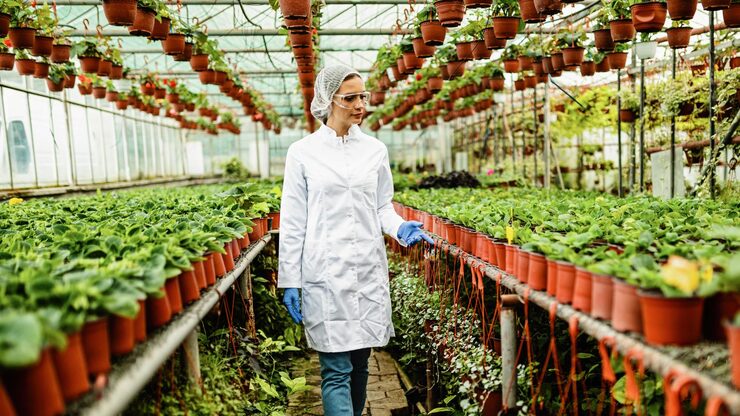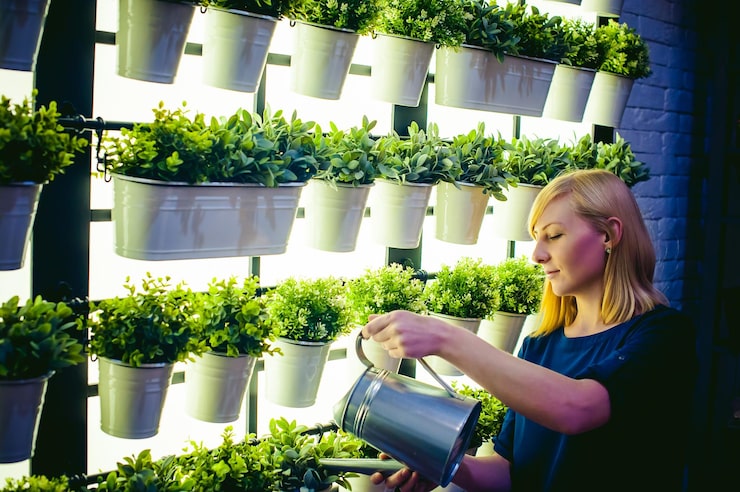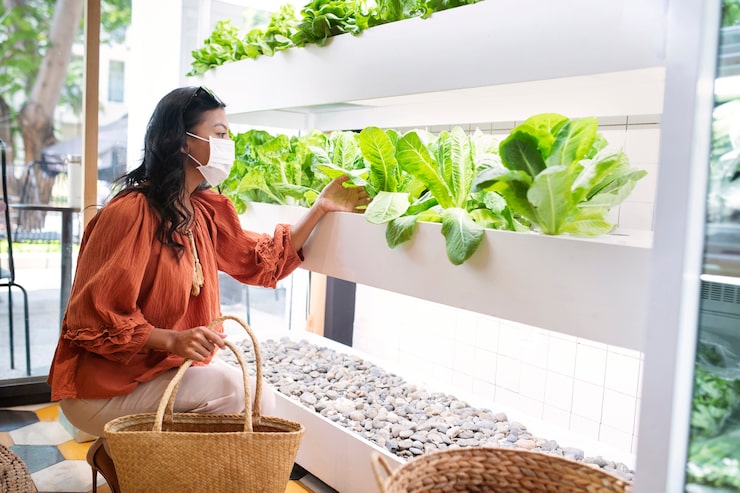The Rise of Vertical Farming: What is an Aeroponic Tower?
The way we grow food is rapidly evolving, moving from sprawling horizontal fields to sleek, space-saving vertical systems. At the forefront of this agricultural innovation is the aeroponic tower. This innovative method is a subset of hydroponics, representing one of the most efficient ways to cultivate plants. Unlike traditional soil-based gardening where roots are buried and compete for resources, an aeroponic tower garden suspends plant roots in the air within a contained column.
The core mechanics are simple yet brilliant: nutrient-rich water is held in a reservoir at the base. A submersible pump draws this solution up to the top of the tower, where it then drips or mists down through the center, bathing the exposed roots of the plants in a precisely formulated nutrient fog. This closed-loop system allows the solution to return to the reservoir, ready to be cycled again. This constant recycling dramatically reduces water waste, making these systems up to 95% more water-efficient than conventional farming.
Faster Growth and Superior Efficiency
One of the most compelling reasons to switch to an aeroponic tower is the remarkable acceleration of plant growth. Studies have consistently shown that plants grown aeroponically can mature up to three times faster than those grown in soil. This dramatic speed-up is due to two primary biological advantages:
Higher Oxygen Uptake for Roots
In a soil environment, roots often struggle for oxygen, especially if the soil is compacted or over-watered. In an aeroponic system, the roots are constantly surrounded by air, leading to significantly higher oxygen uptake, a process known as root respiration. This enhanced oxygen intake is a massive driver of rapid, healthy plant development.
Direct and Precise Nutrient Delivery
With roots suspended, the nutrient-rich water is delivered directly to the root structure. This is far more efficient than soil gardening, where water must first filter through the dirt, picking up nutrients that are then indirectly absorbed by the plant. Furthermore, the gardener has precise control over the exact nutritional formula being delivered, allowing for optimal conditions tailored to specific crops. This superior efficiency means less fertilizer is needed overall.

A Vertical Solution: The Garden Tower for Any Space
The design of the aeroponic system naturally lends itself to a vertical structure, creating the ultimate space-saving garden tower. This vertical orientation is a game-changer for gardeners with limited real estate, making it an ideal choice for urban dwellers, apartment residents, or anyone looking to maximize a small balcony or indoor space.
In less than one square meter of floor space, a typical vertical aeroponic tower garden can house 24 plants or more, yielding a harvest that would require several meters of horizontal land in a traditional setup. This density makes fresh, homegrown produce accessible to everyone, regardless of the size of their yard.
Components of a High-Performing Aeroponic System
To achieve optimal results with your vertical garden tower, it’s helpful to understand the core components and how they work together:
- Reservoir and Pump: The base holds the nutrient solution. A submersible pump drives the solution upward, which is critical for the continuous watering cycle.
- Grow Medium and Net Pots: Instead of soil, a small, inert grow medium (like rockwool or clay pebbles) is used to support the seedling in a net pot. This pot is inserted into the planting pocket on the tower.
- Timers and Automation: Precision is key. Timers automate the watering (e.g., 15 minutes on, 45 minutes off) and lighting cycles, enabling a ‘set it and forget it’ approach that ensures consistency and optimal growing conditions.
- LED Grow Lights: For indoor setups or low-light environments, highly efficient LED grow lights are arranged vertically to cover the entire height of the aeroponic tower, ensuring every plant receives the necessary light intensity for photosynthesis.
Best Crops and Applications
The versatility of the aeroponic tower garden means a wide variety of crops thrive in this environment. The best choices are typically those that don’t develop heavy, woody root systems.
- Leafy Greens: Lettuce, kale, spinach, and Swiss chard are fast-growing and incredibly productive.
- Herbs: Basil, mint, parsley, and chives flourish and provide a constant supply for the kitchen.
- Fruiting Plants: Smaller varieties of strawberries, cherry tomatoes, and bell peppers can also be grown, though vining plants like large tomatoes or cucumbers will require a separate support structure or trellis.
Beyond the kitchen, aeroponics has critical applications in high-stakes environments. NASA, for example, has extensively studied aeroponic principles for growing food in space, recognizing that the lack of soil, highly efficient nutrient use, and closed-loop water system are ideal for long-duration space missions and future planetary colonies.

Conclusion
The shift towards using an aeroponic tower represents more than just a new gardening trend; it’s a sustainable, highly efficient, and productive method of growing food that is perfectly suited for the challenges of modern life. It eliminates the mess of soil, drastically cuts water usage, and provides the conditions for plants to grow faster and healthier than ever before. For anyone looking to take control of their food supply and enjoy truly fresh, home-grown produce year-round, exploring a vertical garden tower is an investment in a greener future. To learn more about bringing this revolutionary growing method into your home, consider visiting ALTO Garden.

